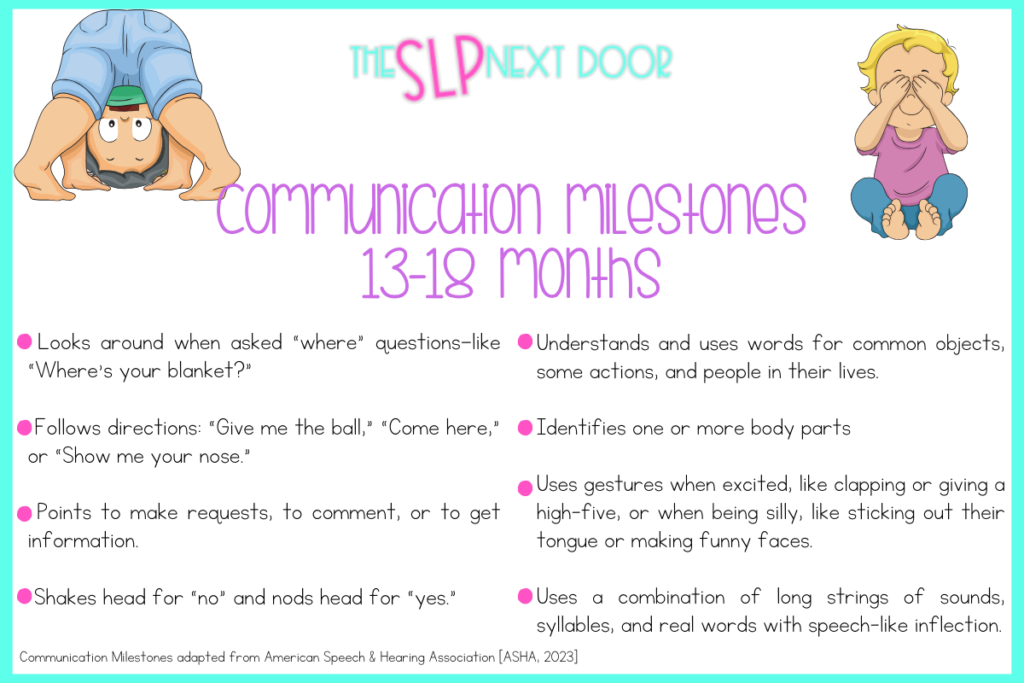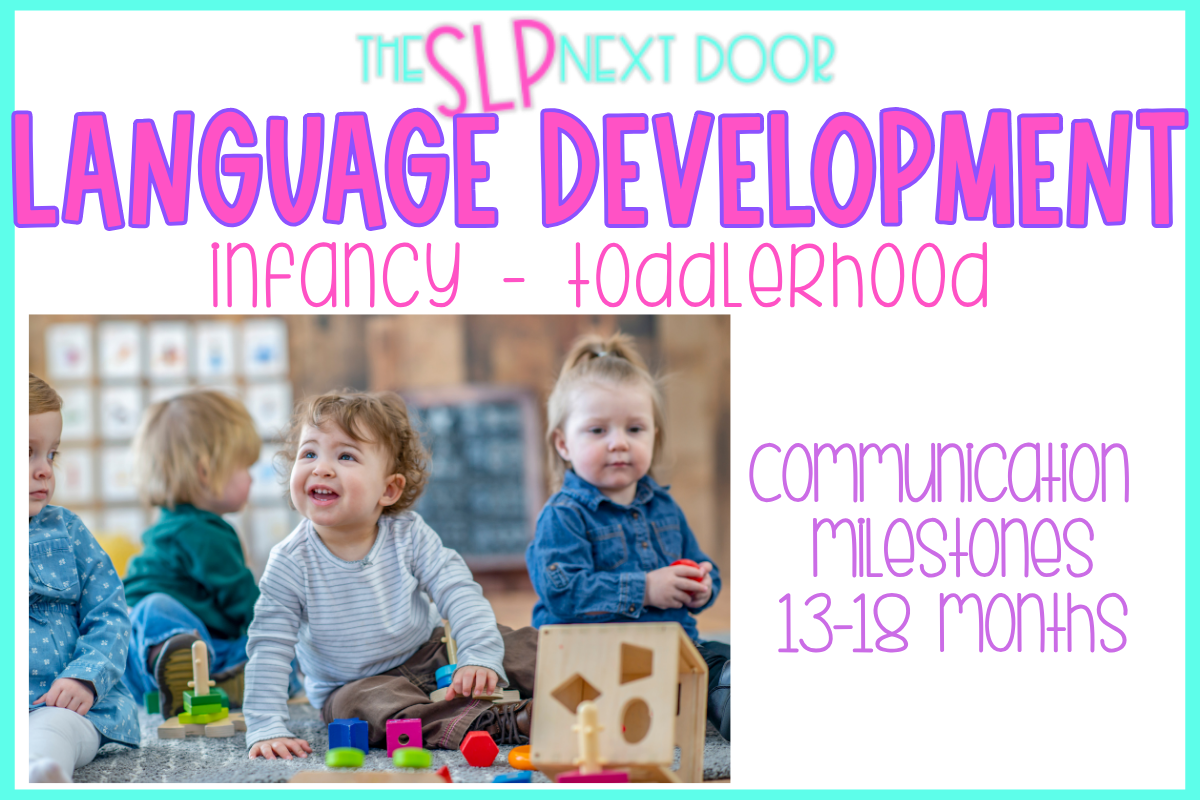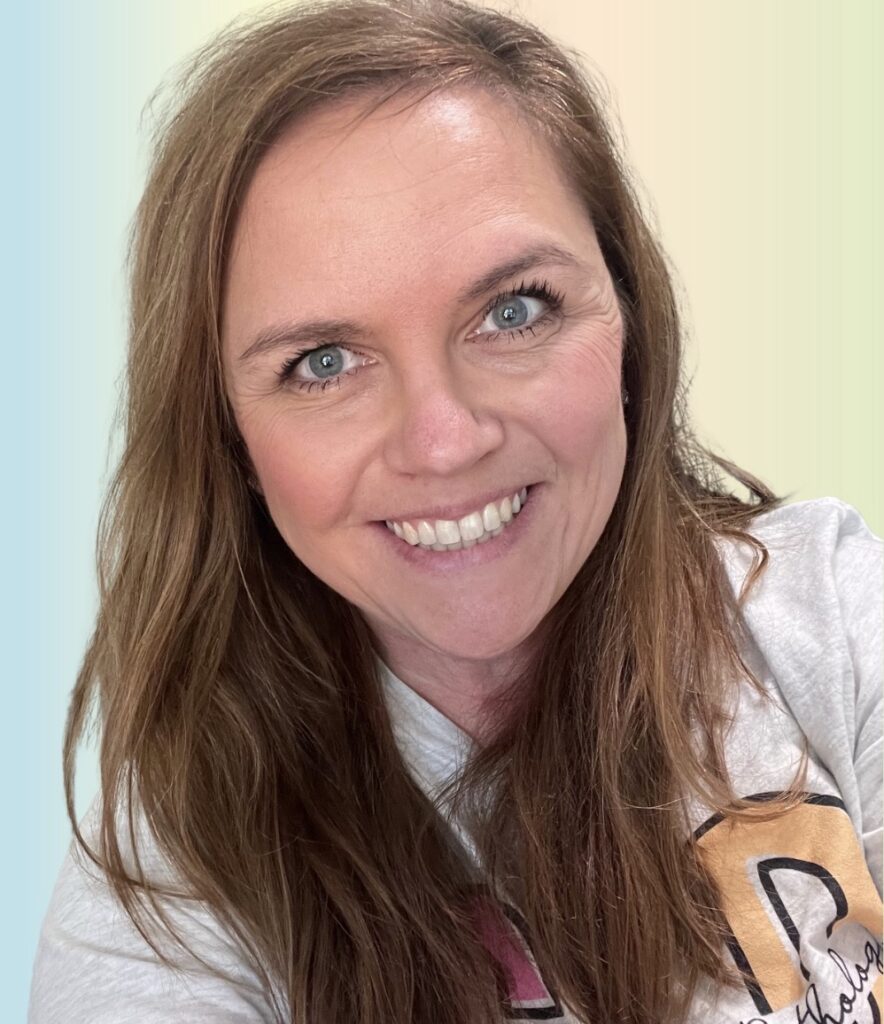Let’s talk about language development: infant to toddler. In 2023, the American Speech and Hearing Association (ASHA) released updated communication milestones for the first five years of life. Communication milestones are goals or markers that a child is expected to achieve in a certain time frame or age. These milestones were created so that parents (and clinicians) could have guidelines to measure their children (or caseload) or provide areas that may require encouragement for continued development.
Be sure to read about the communication milestones and babbling in infants!
Language Development Infant
The first milestone of language development infant to toddler [13-18 months] is that toddlers will look around when asked “where” questions (where’s daddy? Where’s your blanket?) Notice that it doesn’t say points to the answer, it says looks around… in other words, a toddler should begin to understand when you ask them a question and will look for the answer.
Next up, toddlers will follow directions like “give me the ball” “come here” or “show me your nose”. These are straightforward directions and are often paired with a gesture from the caregiver and answered by the toddler using a gesture, vocalization…or both.
Along the lines of gestures, between 13 and 18 months, toddlers will point: to make requests, comment, or to get information (gestures/vocabulary/communication). They will use gestures when they’re excited (like clapping or high-5) or being silly (sticking their tongue out and making funny faces). They may also shakes head for no and nods head for “yes” Remember this though: nodding yes takes a bit more coordination than no- so babies will probably shake their heads no long before they do yes.

Toddler Vocabulary Development
When it comes to language development: infant to toddler vocabulary, toddlers understand and use words for common objects, some actions, and people in their lives. At this age, they will also use a combination of long strings of sounds, syllables, and real words with speech-like inflection. They may also identify one or more body parts.
One of the most important factors of early communication is a child’s vocabulary. However, before a child can identify their body parts, they must be exposed to labeling them. This is typically done through playful interactions or sing-song activities. In the same way, before a child can label objects, there has to have been exposure to the word/concept in some form prior to the toddler labeling.
Does your Toddler Use and Understand Words?
When it comes to speech therapy for toddlers’ evaluations, we have to look from the developmental perspective: what information can we gain about a toddler’s life experience and their exposure to vocabulary? We have to look at the whole picture. It’s also important for us to do this when we are asking caregivers questions. If we ask, “Does your child point to items in a book when you name them?” and the answer is “no,” then we need to dive a little deeper [which, btw- the assessments don’t always do].
Instead, we can ask:
- Can the parent ask their toddler to “hand me the [object]” ?
- Can the toddler find an object or item during playtime?
- Does the toddler label the items while they’re playing? (even if it’s through word approximations or gestures)
Asking more questions brings us more clarity into what exactly is going on. This helps us (and the parent/caregiver)better understand what items or objects toddlers may know; they just might not understand them in multiple contexts [yet!].





3 Responses